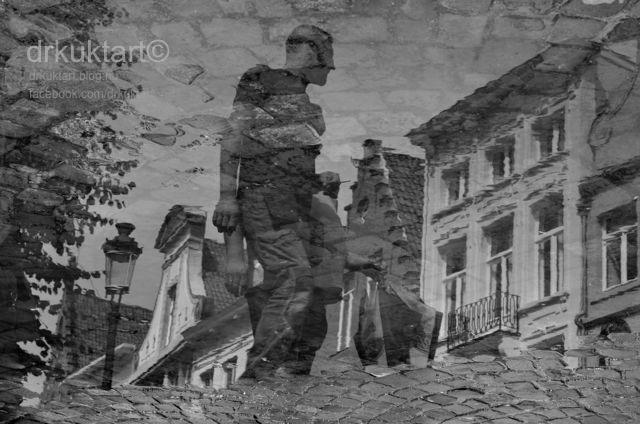
Amikor csak két órára állsz meg Brugge-ben, ráadásul ebből az időból egy órán keresztül az eső is esik, csak gyors bámészkodásra van lehetőség, nem pedig el-elmélázgató, belefeledkező városnézésre. Ilyenkor nem érdemes az útikönyvet bújva egy-kettő látványosság megtekintésével tölteni az időt. Inkább sétáljunk egyet, szívjuk magunkba a látványt, dobbanjunk a várossal. A város történelmi központja gyönyörű, a víztócsák pedig megtöbbszörözték az elénk táruló látványt.
If you only spend two hours in Bruges and it's raining for one hour long, you don't have the possibility to visit each attraction. If you want to have the first impression about this city I recommend to take a walk in the old city centre and open your eyes. The pools which were all around us in the historical centre of Bruges, cloned the beautiful buildings.
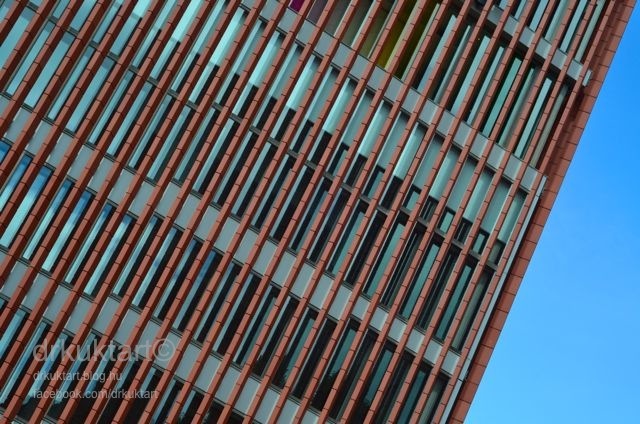
Ha autóval érkezel, az autót a történelmi városmag szélén magasodó modern koncertpalota (Concertgebouw Brugge) alatt elnyúló parkolóházban érdemes letenni. A parkolás nem olcsó mulatság, de a helyszín közel van a látnivalókhoz, így rövid időtartamra érdemes ebben a közelségben hagyni a kocsit.
We parked car in the parking house which is locate under the concert house (Concertgebouw Brugge) near by the historical centre of Bruges.
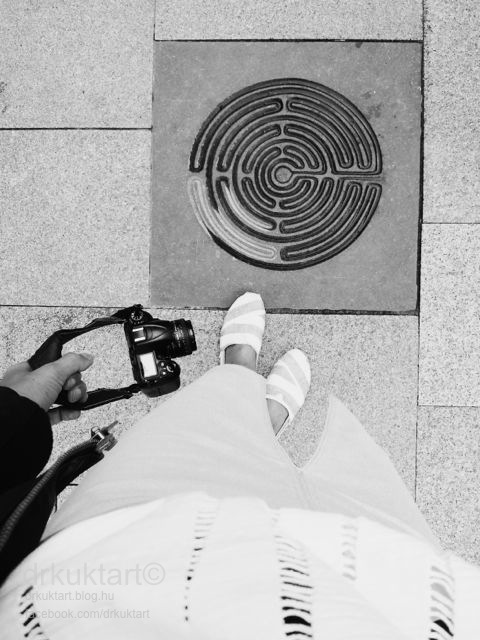
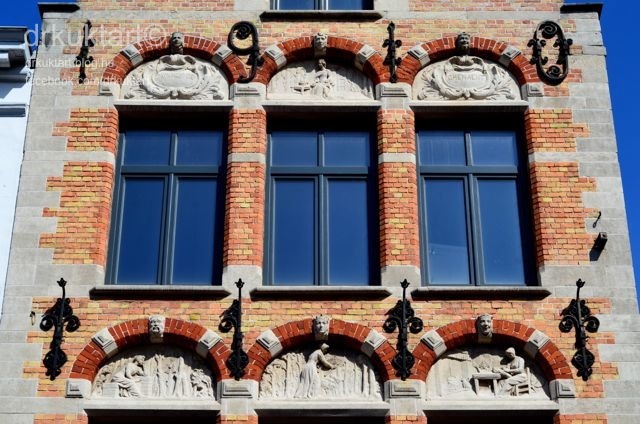 Amit a Wikipédia értelmében egy gyors városnézéshez Brugge-ről érdemes tudni "Brugge (franciául Bruges, németül Brügge) Nyugat-Flandria legnagyobb városa. Történelmi óvárosa 2000 óta szerepel az UNESCO világörökségi listáján. 2002-ben Salamancával egyidőben Európa kulturális fővárosa volt. A várost sokszor az észak Velencéjének is nevezik, hiszen számos csatorna szeli át. Az óvárost körülvevő régi erődítmények és malmok maradványai ezen csatornák mellett találhatóak. Brugge Európa kiemelkedő látványossága köszönhetően annak, hogy a városközpont a középkor óta alig változott."
Amit a Wikipédia értelmében egy gyors városnézéshez Brugge-ről érdemes tudni "Brugge (franciául Bruges, németül Brügge) Nyugat-Flandria legnagyobb városa. Történelmi óvárosa 2000 óta szerepel az UNESCO világörökségi listáján. 2002-ben Salamancával egyidőben Európa kulturális fővárosa volt. A várost sokszor az észak Velencéjének is nevezik, hiszen számos csatorna szeli át. Az óvárost körülvevő régi erődítmények és malmok maradványai ezen csatornák mellett találhatóak. Brugge Európa kiemelkedő látványossága köszönhetően annak, hogy a városközpont a középkor óta alig változott."
According to Wikipedia 'Bruges (/ˈbruːʒ/ in English; Dutch: Brugge [ˈbrʏɣ̟ə]; French: Bruges [ˈbʁyːʒ]; German: Brügge [ˈbrʏɡə]) is the capital and largest city of the province of West Flanders in the Flemish Region of Belgium. It is located in the northwest of the country. Along with a few other canal-based northern cities, such as Amsterdam, it is sometimes referred to as "The Venice of the North". Bruges has a significant economic importance thanks to its port. At one time, it was considered the "chief commercial city" of the world.'
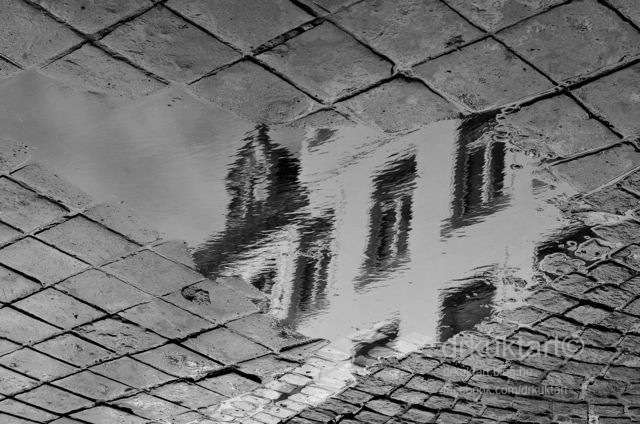
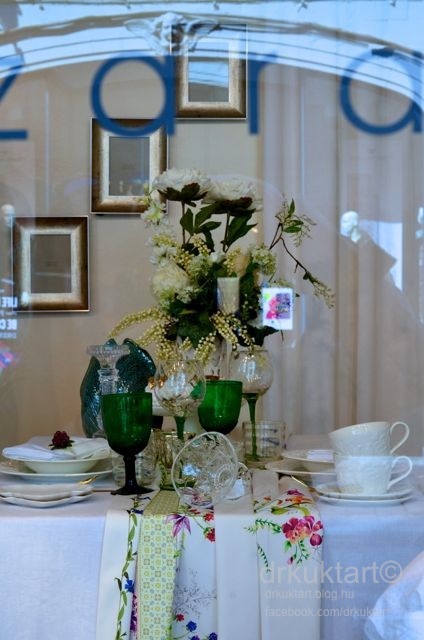
A város történelméről írt hosszúnak tűnő (szintén a Wikipádián fellelhető) összefoglalót érdemes elolvasni, Brugge jelentős kereskedőváros volt, történelmét ezen pozíciójának megtartásáért folytatott folyamatos küzdelem jellemzi. "A pre-román gaol időkből származó településeknek kevés nyoma található. Az első erődítmények Julius Caesar Menapii hódításai után épültek, az i. e. 1. században, a tengerparti területek kalózok elleni védelmére. A 4. században a frankok elhódították a rómaiaktól a területet és Pagus Flandresis néven igazgatták tovább. A viking támadások a 9. században arra ösztönözték I. Balduint, Flandria grófját, hogy megerősítse a román erődítményeket és így megállítsa benyomulásukat a földrészre. A kereskedelem Angliával és Skandináviával így hamar újjáéledhetett. Erre az időre datálható az első itt vert érme, Bryggia névvel. A települést, Flandria első grófja, I. Balduin alapította, de Brugge csak 1128-ban kapta meg a városi jogot. Brugge város alapító okirata 1128. július 27-ére datálódik. Az újdonsült polgárok nyomban új falakat és csatornákat építettek. 1050-től a folyó fokozatos feltöltődése okozta, hogy a város elvesztette kijáratát a tengerre. Egy 1134-es vihar új kijáratot nyitott, természetes csatornát alakítva ki a Zwin-öbölnél. Az új tengerpart egész a Dammeig nyúlt, itt alakult ki Brugge kereskedelmi központja. A város újraéledt a 12. században: a gyapjúpiac, a gyapjúszövő-ipar és a szövetpiac prosperitását nagyban a városfalaknak köszönheti. Ezek folytán a fölösleg biztonságosan felgyűlhetett a flandriai hercegek védelme alatt. Brugge része volt a flamand szövetkereskedelemnek már a 13. század elején. A város vállalkozói elérték, hogy angol és skót gyapjútermelő területeken gazdasági kolóniákat létesítsenek. Az angol kapcsolatok hozták be a normann gabonát és a gaszkonyi borokat. A hanza hajók megtöltötték a kikötőt, melyet idővel a Damme alatt Sluysig kellett kibővíteni, hogy alkalmas legyen az új halászhajók számára. A Hanza-szövetség terjeszkedésével egy időben pedig Lübeckből és Hamburgból érkeztek árusok. 1253-ban Margit flandriai grófnő speciális privilégiumokat harcolt ki, ilyen volt például a vámkedvezmény. Brugge forgalma kiemelkedett a Hanza városai közül, így nem véletlenül helyezte a szövetség ide egyik központi irodáját. 1277-ben megjelent az első genovai kereskedő flotta Brugge kikötőjében. Ez volt az első kereskedőkolónia, mely Bruggét a mediterráneummal kötötte össze. Később, a 13. században már genovai, velencei és firenzei kereskedők is látogatták Bruggét, de gyakran fordultak meg délnémet, kasztíliai, portugál és skót árusok is. A fejlődés nemcsak a levantei árukkal való kereskedés lehetőségét nyitotta meg, de fejlesztette a kereskedelmi és pénzügyi technikákat, és növelte a tőke beáramlását, előmozdította Brugge bankügyleteit. Ezekben az időkben létesült itt a világon először tőzsde, melyet a Van der Beurse kereskedőcsalád alapított, innen ered a börze kifejezés. 1309-ben megnyílt a börze és a legszofisztikáltabb pénzpiaccá nőtte ki magát a Németalföldön még a 14. században. A növekvő jólét szociális elégedetlenségeket gerjesztett. 1302-ben a lakosság egyesítette erejét Flandria kormányzójával a francia hatalom ellen. Az ellentét július 11-én, Kortrijk közelében az aranysarkantyús csatában kulminált. Jan Breydelnek és Pieter de Conincknak, a győztes felkelés vezéreinek szobra még mindig látható a központi piactéren. A 15. században a burgundiai herceg kormányzása alatt a város kulturálisan, építészetileg és gazdaságilag is virágzását élte. A középkor végéhez közeledve Brugge Észak-Európa leggazdagabb városának számított. Jó Fülöp Burgundia hercege udvartartást vezetett Bruggében, Brüsszelben, és Lille-ben, ami számos művészt, bankárt és más prominens személyiséget vonzott a városokba a világ minden részéről. Az új flamand festőiskola olajfestmény technikájával világszerte elismerést szerzett. Az első könyv, melyet egyébiránt angol nyelven adtak ki, Bruggében jelent meg William Caxton keze nyomán. Ekkor töltötte itt száműzetését az angol IV. Edward és III. Richard is. A populáció több mint 40.000 lakosra duzzadt. A 15. század végén a Zwin-öböl elhomokosodása elvágta a tengertől Bruggét, ezért a burgundiaik elhagyták a várost. I. Miksa korlátozta a város jogait és innentől kezdve Antwerpen lett a flamand régió központja. A spanyol uralom (1524-1713) után rövid idő alatt több ország fennhatósága alá is került: Ausztria (1713-1795), Franciaország (1795-1815) és Hollandia (1830-ig). Az 1500-as évek meghozták a város prosperitását. A város hamar Antwerpen nyomába ért, mint a németalföldi gazdaság zászlóvivője. a 17. század során aztán a csipkekészítés hagyománya teljesen elsorvadt, jóllehet számos próbálkozás volt a dicső múlt felélesztésére. A tengeri infrastruktúra modernizálódott. Új összeköttetések létesültek a tengerrel, ez mégsem hozta meg a várt eredményt. Brugge elgyengült és fokozatosan eltűnt a történelmi palettáról. Ebben az időkben a legnagyobb problémát az jelentette, hogy a város nem vállalt részt a 19. században végbement a iparosodásban. George Rodenbach el is nevezte az alvó várost „Bruges la Morte“ című regényében „a halott Brugge”-nek (Bruges-la-Morte). A 19. század második felében a város a világ első turistacélpontjává vált, gazdag brit és francia turistákat vonzva látványosságaihoz. a 20. század második felében kezdte a város visszanyerni múltbeli dicsőségét. A kiemelkedő európai integrációs tevékenységéért Brugge 1960-ban Európa-díjat kapott. Zeebrugge kikötőnek köszönhetően ismét gazdasági fellendülés következett. Zeebrugge kikötőjét eredetileg a németek építették – az „U-Boot”-ok számára az első világháborúban. Ez nagyban kibővült 1970-ben és az 1980-as évek elején, hogy Európa legfontosabb és legmodernebb kikötőjévé váljon. A nemzetközi turizmus ezután robbanásszerű fejlődésen ment keresztül. Erőfeszítéseik nyomán 2002-ben Brugge lett Európa kulturális fővárosa."
According to the Wikipedia Bruges has a really exciting history. 'Very few traces of human activity in Bruges date from the Pre-Roman Gaul era. The first fortifications were built after Julius Caesar's conquest of the Menapii in the first century BC, to protect the coastal area against pirates. The Franks took over the whole region from the Gallo-Romans around the 4th century and administered it as the Pagus Flandrensis. The Viking incursions of the ninth century prompted Baldwin I, Count of Flanders to reinforce the Roman fortifications; trade soon resumed with England and Scandinavia. Bruges received its city charter on July 27, 1128, and new walls and canals were built. Since about 1050, gradual silting had caused the city to lose its direct access to the sea. A storm in 1134, however, re-established this access, through the creation of a natural channel at the Zwin. The new sea arm stretched all the way to Damme, a city that became the commercial outpost for Bruges. Bruges had a strategic location at the crossroads of the northern Hanseatic League trade and the southern trade routes. Bruges was already included in the circuit of the Flemish and French cloth fairs at the beginning of the 13th century, but when the old system of fairs broke down the entrepreneurs of Bruges innovated. They developed, or borrowed from Italy, new forms of merchant capitalism, whereby several merchants would share the risks and profits and pool their knowledge of markets. They employed new forms of economic exchange, including bills of exchange (i.e. promissory notes) and letters of credit. The city eagerly welcomed foreign traders, most notably the Portuguese pepper and spice traders. With the reawakening of town life in the twelfth century, a wool market, a woollens weaving industry, and the market for cloth all profited from the shelter of city walls, where surpluses could be safely accumulated under the patronage of the counts of Flanders. The city's entrepreneurs reached out to make economic colonies of England and Scotland's wool-producing districts. English contacts brought Normandy grain and Gascon wines. Hanseatic ships filled the harbor, which had to be expanded beyond Damme to Sluys to accommodate the new cog-ships. In 1277, the first merchant fleet from Genoa appeared in the port of Bruges, first of the merchant colony that made Bruges the main link to the trade of the Mediterranean. This development opened not only the trade in spices from the Levant, but also advanced commercial and financial techniques and a flood of capital that soon took over the banking of Bruges. The Bourse opened in 1309 (most likely the first stock exchange in the world) and developed into the most sophisticated money market of the Low Countries in the 14th century. By the time Venetian galleys first appeared, in 1314, they were latecomers.[13] Numerous foreign merchants were welcomed in Bruges, such as the Castilian wool merchants who first arrived in the 13th century. The foreign merchants expanded the city's trading zones. They maintained separate communities governed by their own laws until the economic collapse after 1700. Such wealth gave rise to social upheavals, which were for the most part harshly contained by the militia. In 1302, however, after the Bruges Matins (the nocturnal massacre of the French garrison in Bruges by the members of the local Flemish militia on 18 May 1302), the population joined forces with the Count of Flanders against the French, culminating in the victory at the Battle of the Golden Spurs, fought near Kortrijk on July 11. The statue of Jan Breydel and Pieter de Coninck, the leaders of the uprising, can still be seen on the Big Market square. (…) Starting around 1500, the Zwin channel, which had given the city its prosperity, also started silting. The city soon fell behind Antwerp as the economic flagship of the Low Countries. During the 17th century, the lace industry took off, and various efforts to bring back the glorious past were made. In the last half of the 19th century, Bruges became one of the world's first tourist destinations attracting wealthy British and French tourists. By 1909 it had in operation an association called 'Bruges Forward: Society to Improve Tourism.'[22] After 1965 the original medieval city experienced a renaissance. Restorations of residential and commercial structures, historic monuments, and churches generated a surge in tourism and economic activity in the ancient downtown area. International tourism has boomed, and new efforts have resulted in Bruges being designated 'European Capital of Culture' in 2002.'
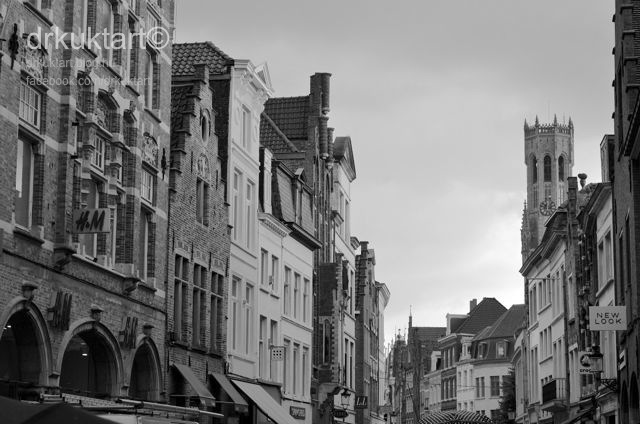
A város történelmi városközpontja 2000 óta a Világörökség (UNESCO) részét képezi.
The historic city centre belongs to the World Heritage Site of UNESCO since 2000.

Reggel jártunk ott, így belefért egy gyors reggeli a Panos-ban (Zuidzandstraat 29 8000 Brugge).
We visited the city in the morning and had a short breakfast in Panos (Zuidzandstraat 29 8000 Bruges).
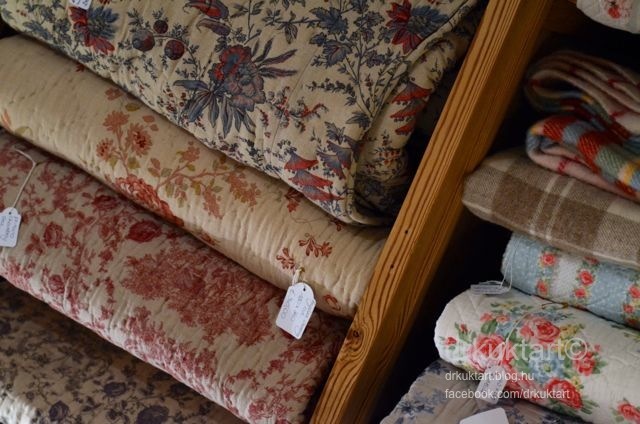
Majd a kihagyhatatlan lakberendezési bolt, a De Ark van Zarren következett.
After our fast breakfast we visited the beautiful decoration shop of De Ark van Zarren.
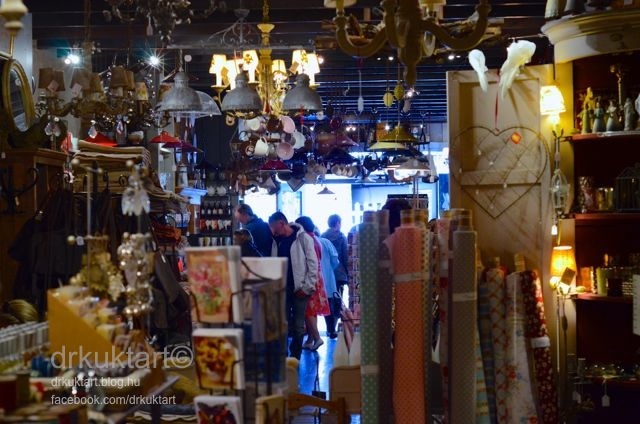
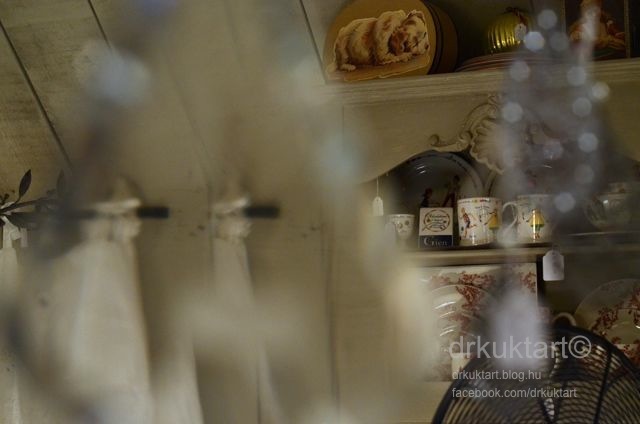
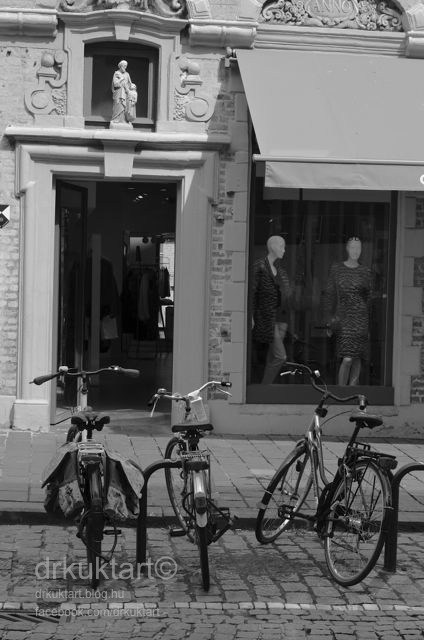
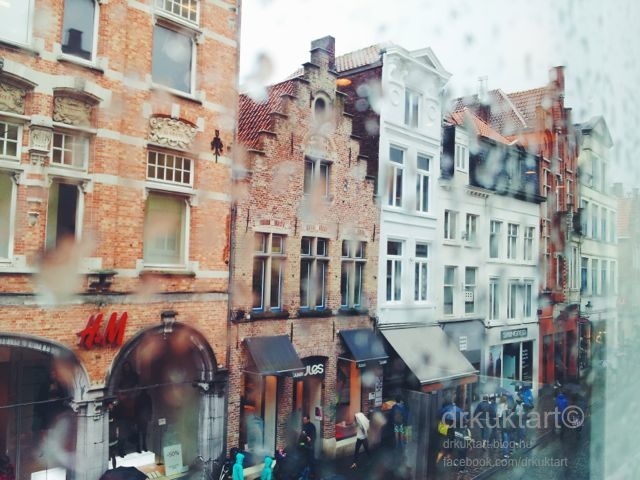
Majd elérkezett az eső ideje. Szakadt, így esernyő híján jobbnak láttuk behúzódni valahova. A röpke egy órát a Hema-ban (olcsó áruházlánc Belgiumban) töltöttük. A menta teájuk friss mentából készül és nagyon finom.
Then it started to rain and we didn't have any umbrella with us, so we had to find a shelter for one hour. We were in front of Hema, it seemed to be reasonable to enter. Their mint tea is made from fresh mint and really delicious.
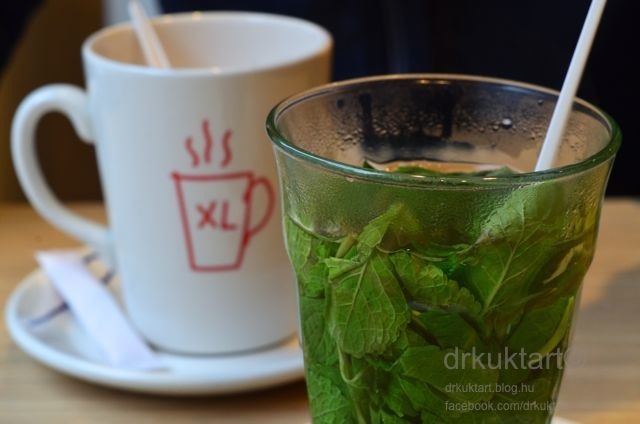
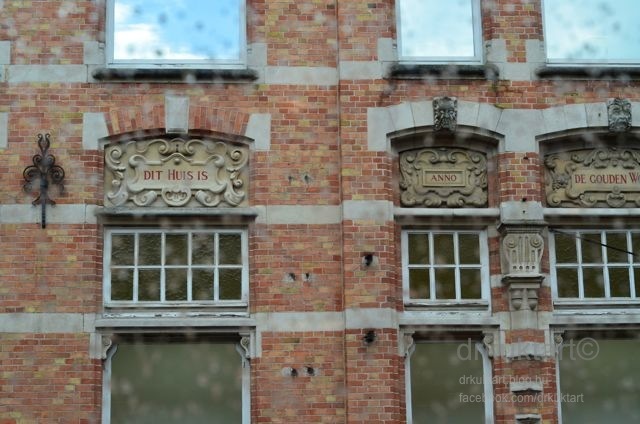

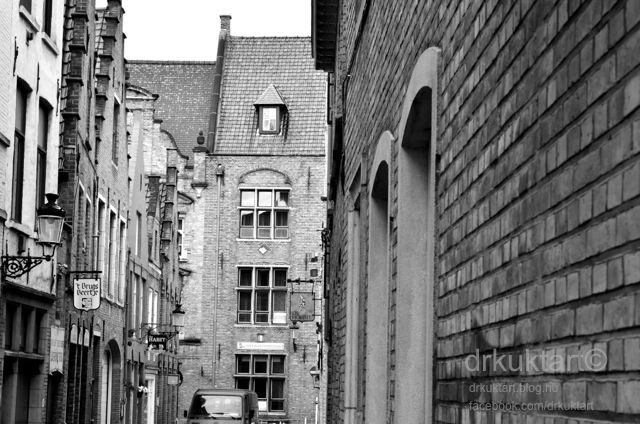

Az eső után még gyorsan ellátogattunk a Grote Markt (vásártér) irányába. Brugge-ben igazán gusztusos virágüzletek vannak, csodás választékkal. Példának okáért ez a kis fügefa palánta igazán kelleti magát, vigyél haza (majd máskor).
After it stopped raining we walked to the Grote Markt. We saw many nice shops for example this nice florist.
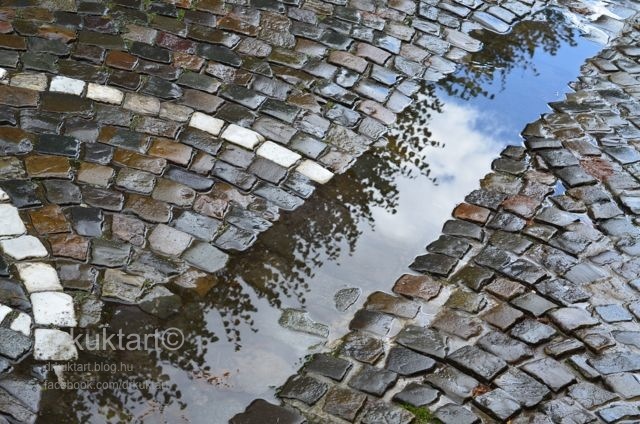
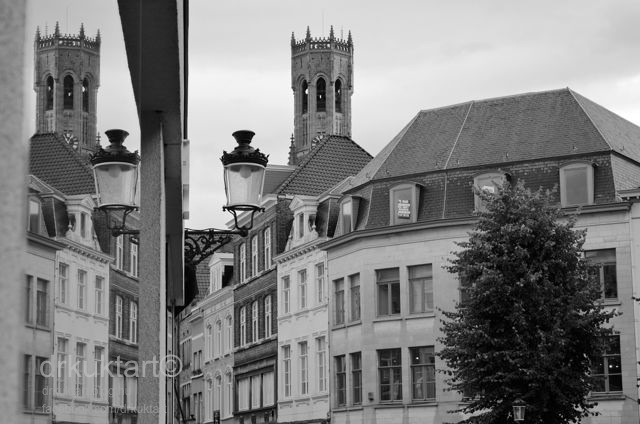
A Belfort harangtornya.
The tower of Belfort.
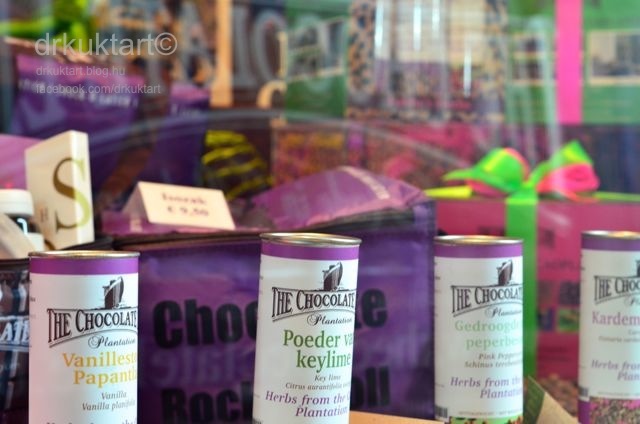
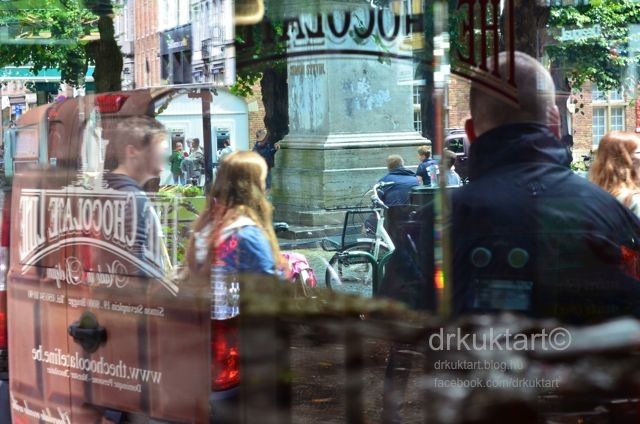
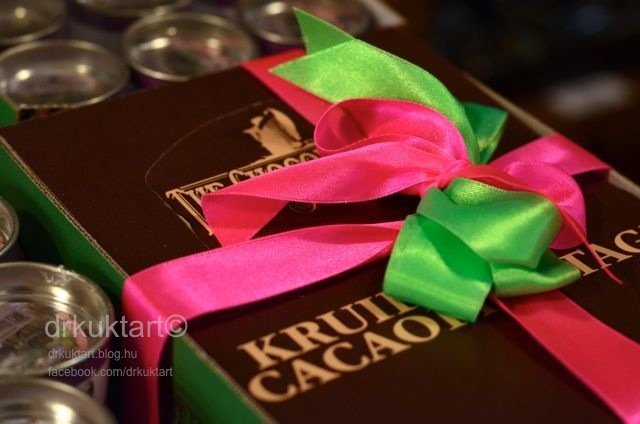

Egy kis nasi a The Chocolate Line-ból.
We bought some chocolate in The Chocolate Line.
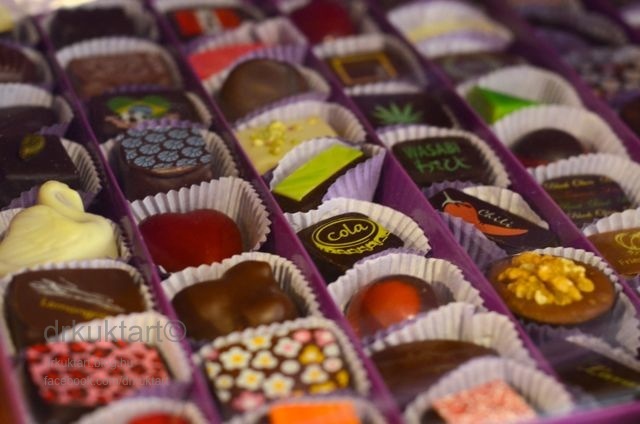
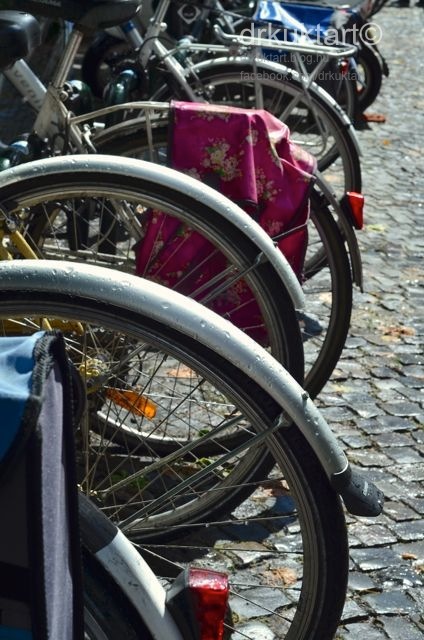
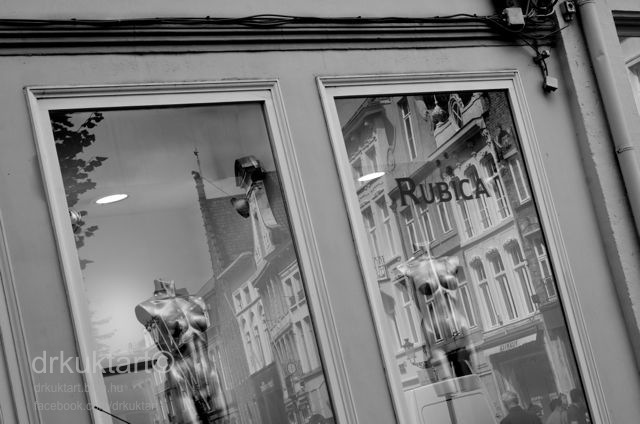
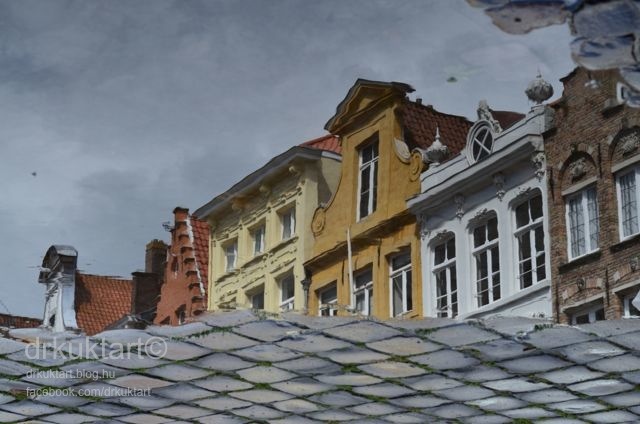

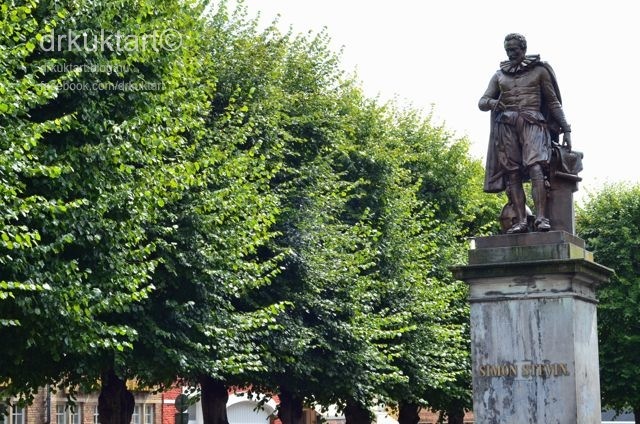
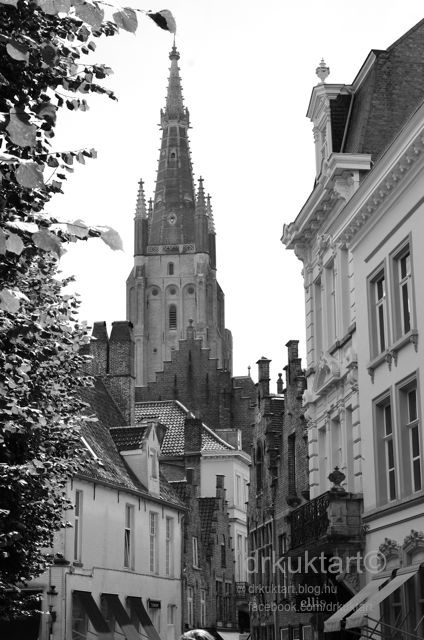
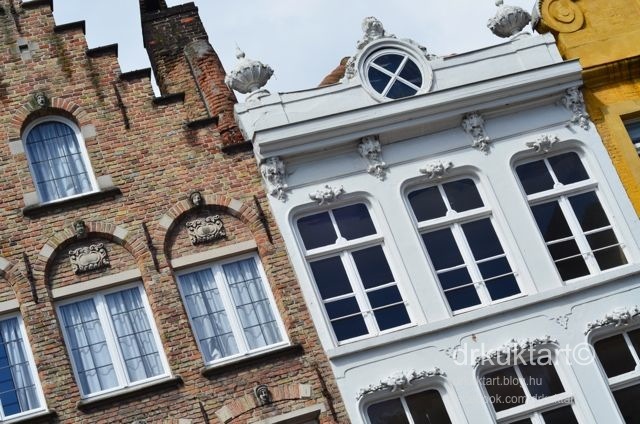

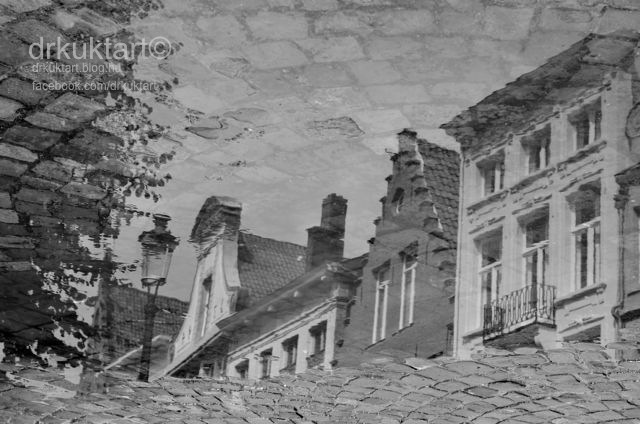
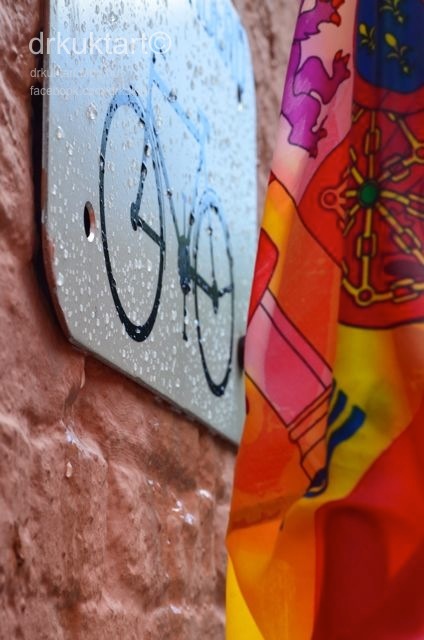
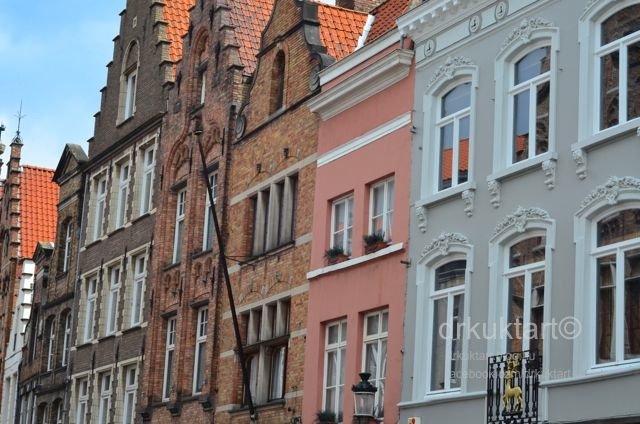

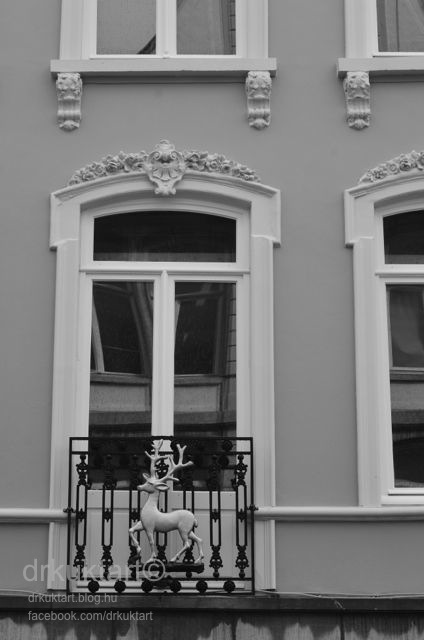
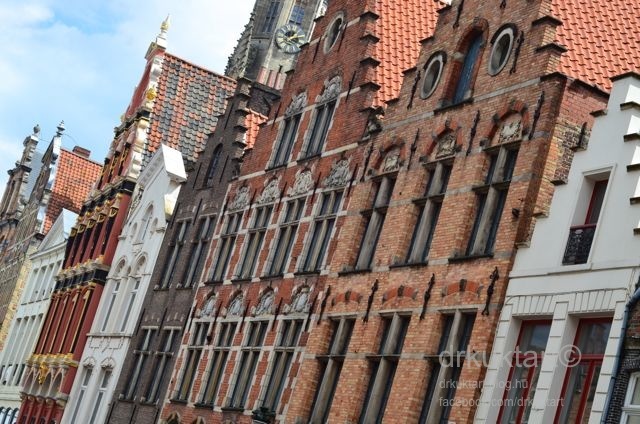

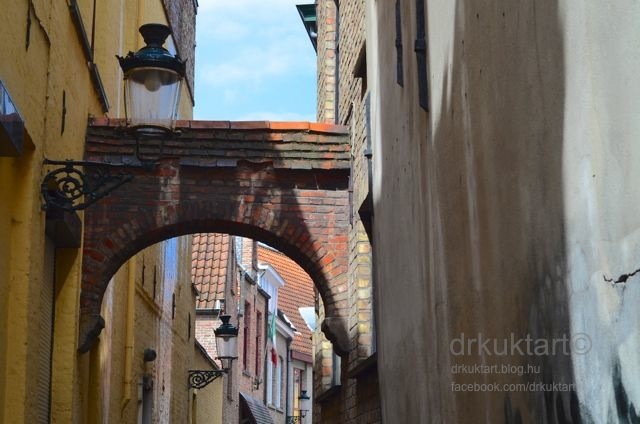
Elragadó sikátorok.
Lovely small streets.


Nem annyira autentikus, de mindenképpen figyelemfelhívó ez a hamburger-sült krumpli mutáns.
Funny advertisement for hamburgers and French fries.
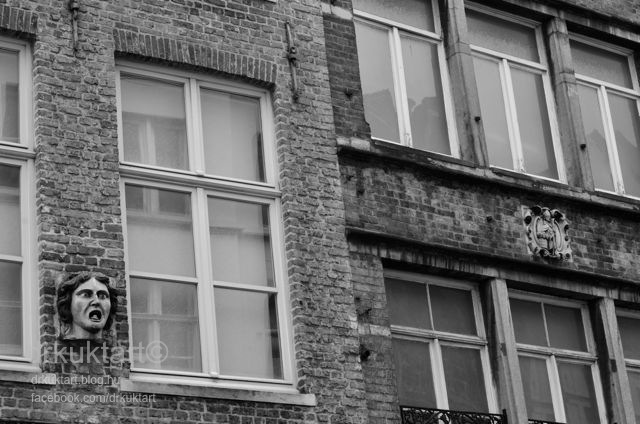
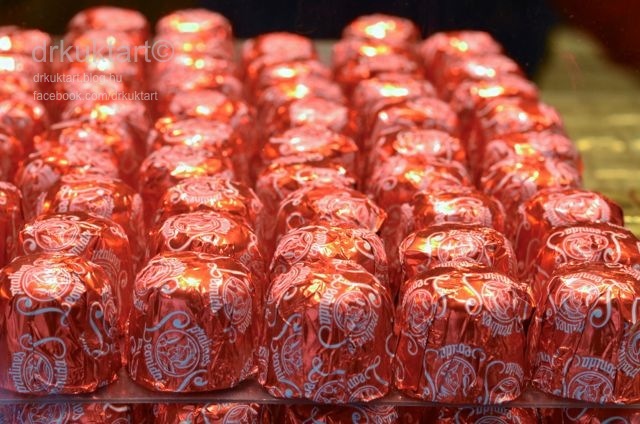
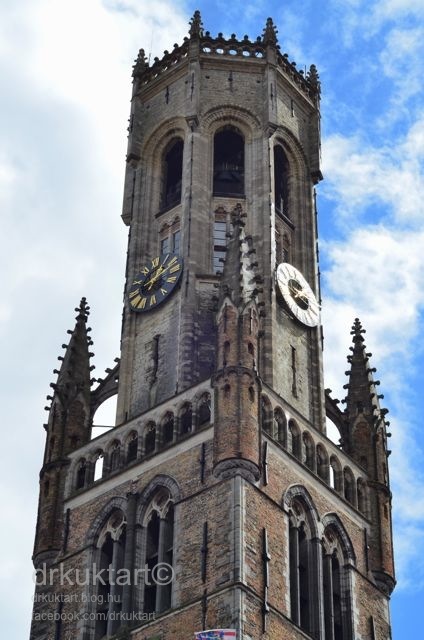
A Belfort, a város egyik szimbólumának számító középkori harangtorony, amely a piactér egyik oldalán található. 366 lépcsőn juthatunk fel a toronyba belépőjegy megváltása mellett. Felmenni sajnos most nem volt idő, de ami késik, nem múlik. Következő alkalommal erről is beszámolok.
'The belfry of Bruges, or Belfort, is a medieval bell tower in the historical centre of Bruges, Belgium. One of the city's most prominent symbols, the belfry formerly housed a treasury and the municipal archives, and served as an observation post for spotting fires and other danger. A narrow, steep staircase of 366 steps, accessible by the public for an entry fee, leads to the top of the 83-metre-high building, which leans about a metre to the east. To the sides and back of the tower stands the former market hall, a rectangular building only 44 m broad but 84 m deep, with an inner courtyard. The belfry, accordingly, is also known as the Halletoren (tower of the halls).'
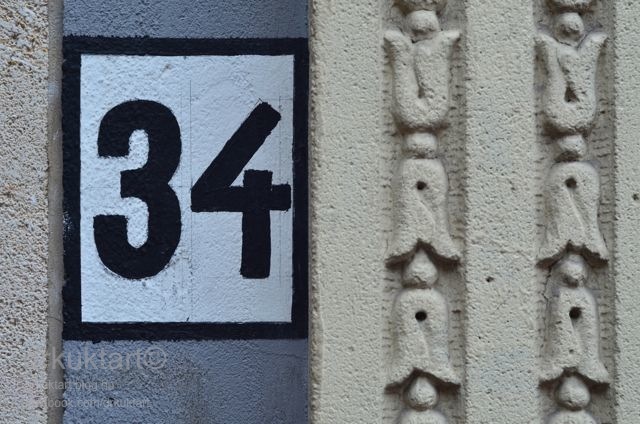

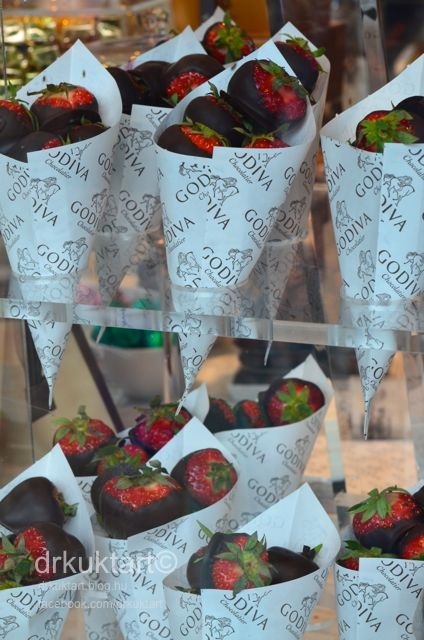
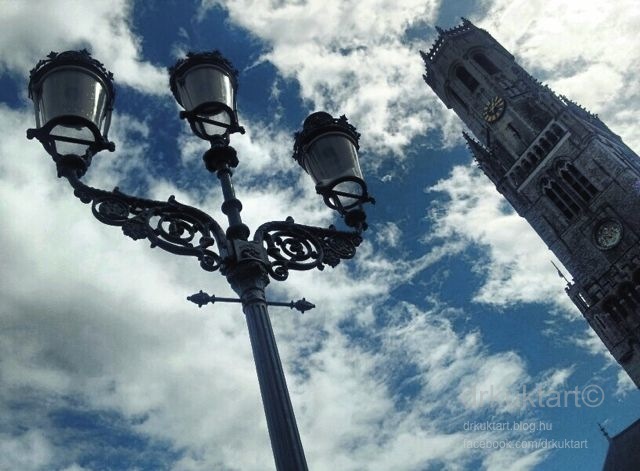
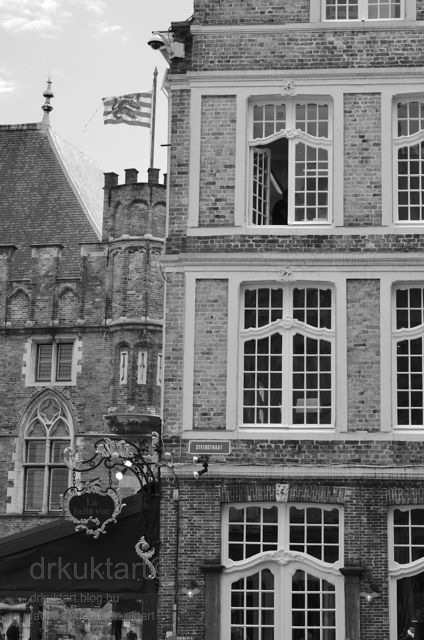
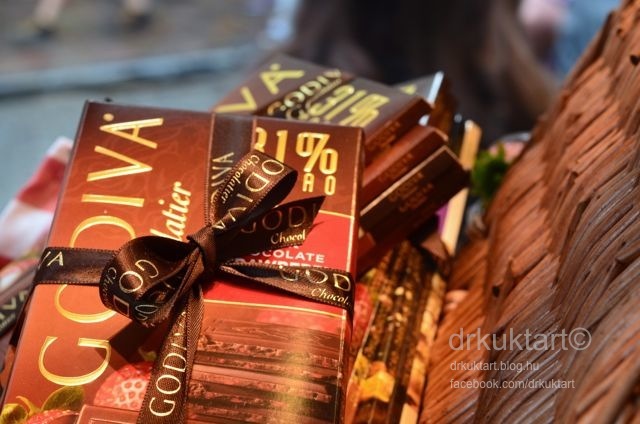
Zárszóként betérünk még a Godiva-ba...
At the end of our 'sightseeing tour' we visited Godiva as well...
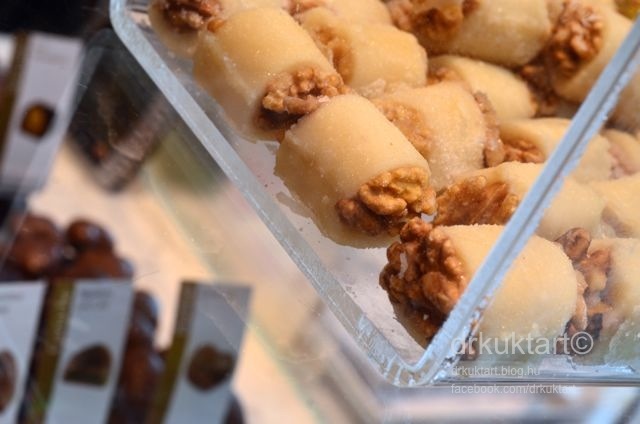
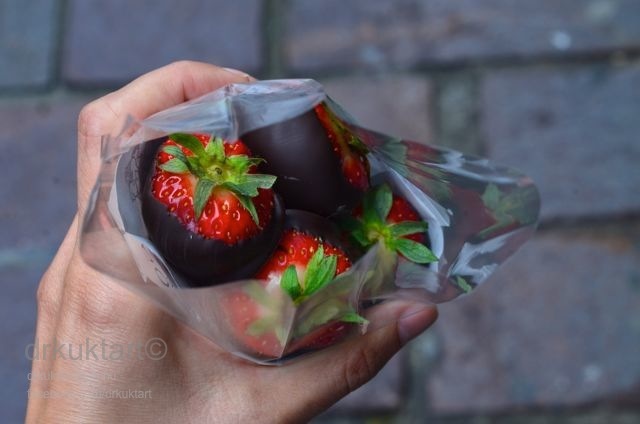
… ezért az epres finomságért.
…to taste this chocolate covered strawberry. Yummy.
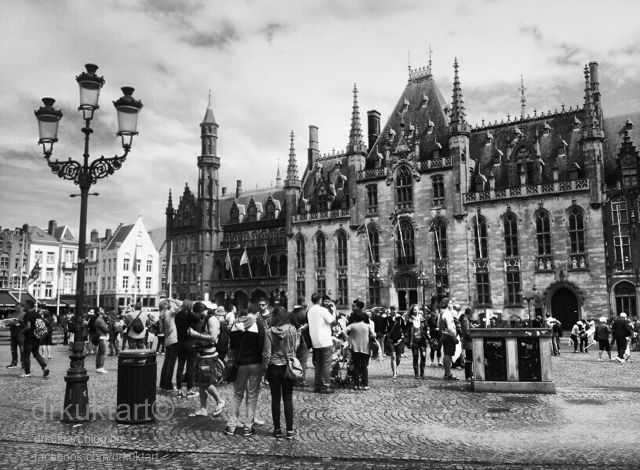
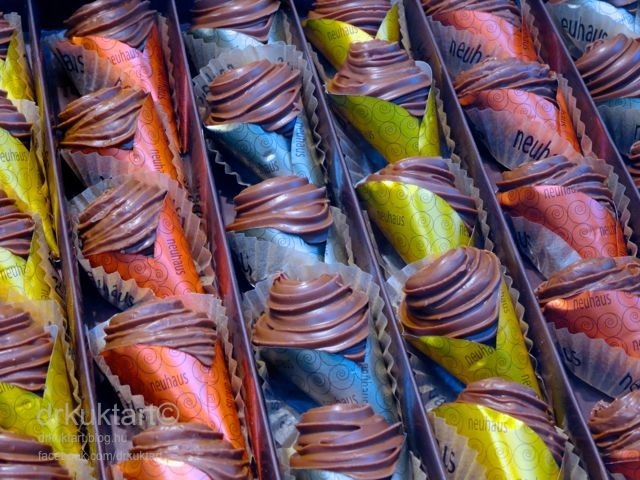
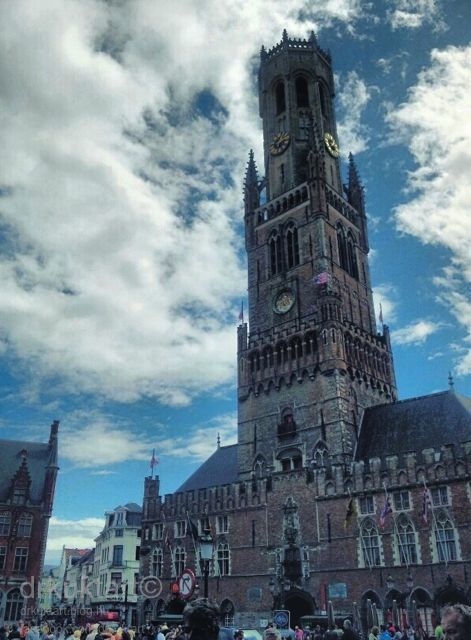
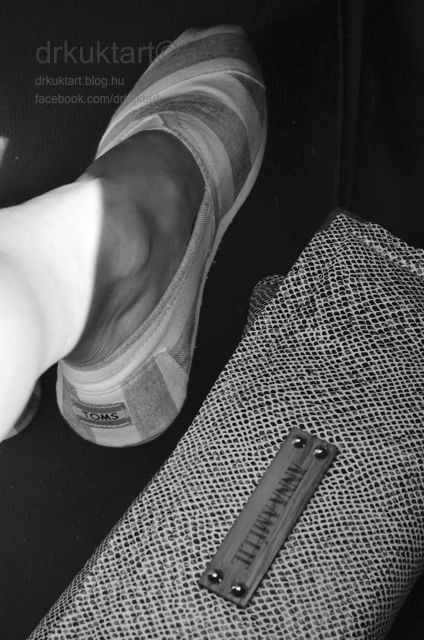
Ha tetszett a bejegyzés, kövess Facebook-on ITT és Instagram-on ITT.
Szép napot kívánok!
If you like this post, follow me on Facebook HERE or Instagram HERE.
Have a nice day!
DRKUKTA



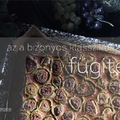

Kertes_Kata 2014.09.09. 22:09:13
drkuktart 2014.09.09. 22:38:11